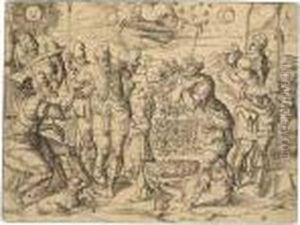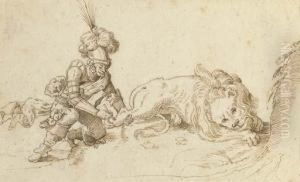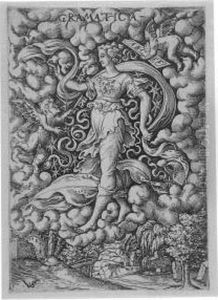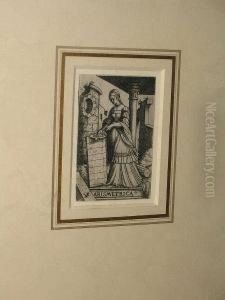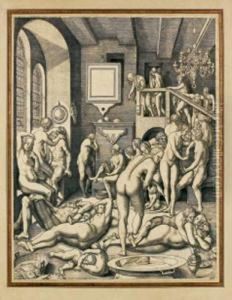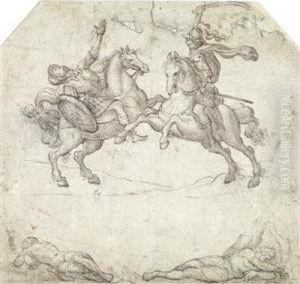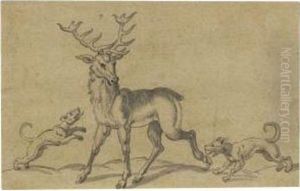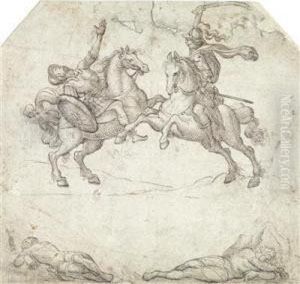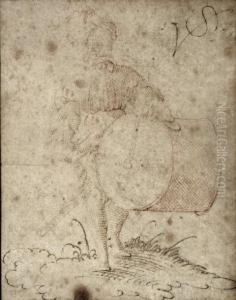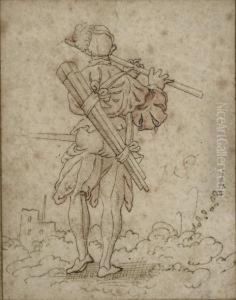Virgil Solis Paintings
Virgil Solis, born in 1514 in Nuremberg, Germany, was a prolific engraver and draughtsman of the German Renaissance. Although not as widely recognized as some of his contemporaries like Albrecht Dürer, Solis made significant contributions to the world of art through his detailed engravings and illustrations. He began his career as an apprentice in his home city, which was a vibrant center for artists and craftsmen during the 16th century, allowing him to develop a robust foundation in the arts from a young age.
Solis worked primarily in the medium of woodcut and engraving, producing illustrations for books, decorative prints, and standalone artworks. His style was characterized by a keen attention to detail and a flair for capturing both the complexities of human figures and the subtleties of animal and plant life. Among his notable works are the illustrations for Ovid’s 'Metamorphoses' and emblem books, which were widely circulated and admired during his lifetime and beyond.
In addition to his engravings, Solis was known for his work in ornament design, contributing to the flourishing decorative arts scene in Nuremberg. His designs included intricate patterns and motifs that were used in various forms of decorative arts, including jewelry, armor, and household items.
Despite his prolific output and contributions to the art world, many details of Solis’s life remain obscure, and he did not achieve the same level of fame as some of his peers. However, his work has been appreciated for its craftsmanship and beauty, and he is remembered as an important figure in the Northern Renaissance. Virgil Solis died in 1562 in Nuremberg, leaving behind a legacy that continues to be celebrated by art historians and enthusiasts.
